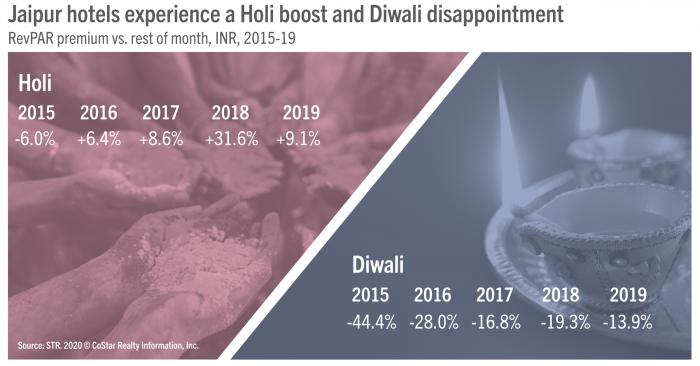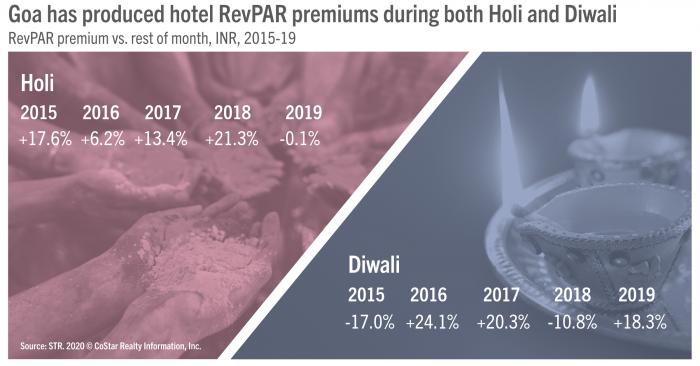Commonly referred to as the festivals of light and colour, respectively, do Diwali and Holi bring a ray or splash of either to India’s hotels? A 2015 Hotels.com study revealed that locals are increasingly traveling abroad during Diwali to celebrate with friends and families, while overseas tourists are drawn towards the light of these famous festivities.
This poses the interesting question of Diwali’s effect—does the relationship between inbound and outbound tourists spell success or concern for hoteliers? And with local traditions at the heart of Holi’s celebrations, how does this event affect hotel performance in comparison?
Festival performance compared with the rest of the month
When compared with the rest of the month, there is evidence of lower revenue per available room (RevPAR) on festival dates in a number of India’s key markets, especially during Diwali. While hotel average daily rate (ADR) tends to increase or decrease slightly for the event periods, significantly lower occupancy levels ensure that RevPAR lags behind the monthly average. However, there are exceptions to this rule and some markets are more affected than others.

